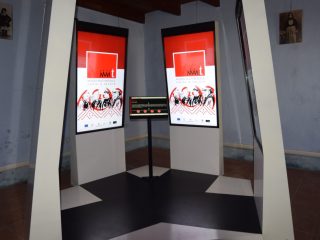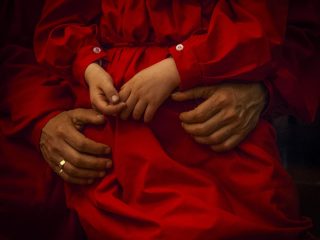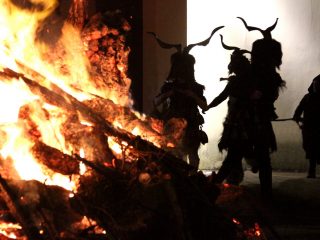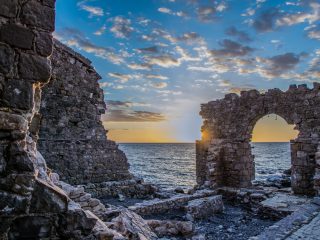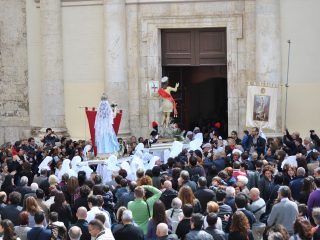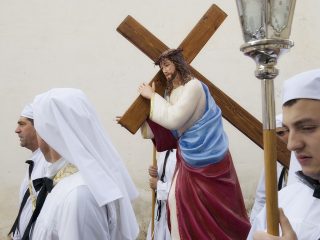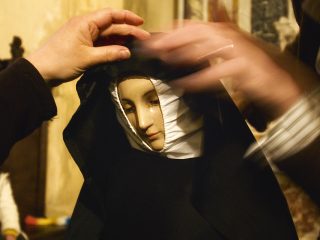Lula is a village with just over a thousand inhabitants. It stands on the slopes of the western side of Monte Albo at the heart of Baronia, in central-eastern Sardinia. The village is well-known for its mineral deposits, Nuragic findings and its breathtaking landscapes. The Carrasecare luvulesu, is a deep-rooted tradition of the village and one of the most evocative on the Island.
The carnival starts on 16 January when the blessed bonfire is lit in honour of Sant’Antonio Abate and the first outing of the masks is held. The “Su Battileddu” masks take centre stage at the carnival of Lula. They wear black clothing and are covered with sheep and mutton skins. Their face is covered in soot and stained with blood. They wear a black headscarf and two large horns, generally similar to those of a deer. “Su Battileddu” is the sacrificial victim of the carnival of Lula. They carry a sheep’s stomach between the horns (“sa ‘entre ortata”); on their chest they wear cowbells (“marrazzos”) and on their stomach, the belly of an ox full of blood and water (“su chentu puzone”). Every so often, this is poked and pierced in order to soak the ground and fertilise the fields, as a good omen for plentiful crops.
During the parades which are held on Sunday, Monday and Tuesday of carnival, “Su Battileddu” is followed by the “Battileddos Gattias”, men dressed as widows, with a black headscarf, and male leather shafts (“sos gambales”). They start singing “sos attitos”, funeral songs in honour of the carnival’s victim, and cradle a cloth doll which every so often they present to the women in the crowd asking them to breastfeed it.
They are followed by the “Gattias”, seated in a circle who play the game “pinch but don’t laugh” (“pitzilica e non rie”). The game involves passing a needle over oneself while trying not to laugh. The person who laughs has to offer a drink to everyone else taking part in the game. As well as the “Gattias”, the procession includes “Sos Battileddos Massajos”, or rather the custodians of the carnival’s victim. They are usually dressed as peasants and their faces are dirty with soot. They carry goads and leather straps in their hand which they use to tie up the victim, “Su Battilleddu”, after which, they beat the victim to death. The “Su Battileddu” is then reborn and is placed on a cart, pulled by two “Battileddos Massajos”, which are tied as though they were oxen.
The Carnival of Lula may symbolise the eternal battle between good and evil. The name of the mask, “Battileddu” perhaps originates from “battile”, a word which in Sard means “something useless”, “rag” or “good for nothing”, so a person of no use to the community hence they could easily be sacrificed to make the fields fertile; but the name could also derive from the Greek word “bathileios”, meaning a wealth of crops, which incidentally was one of the many names given to Dionysus. The mask was rediscovered in 2001 after falling into disuse after the two world wars.








